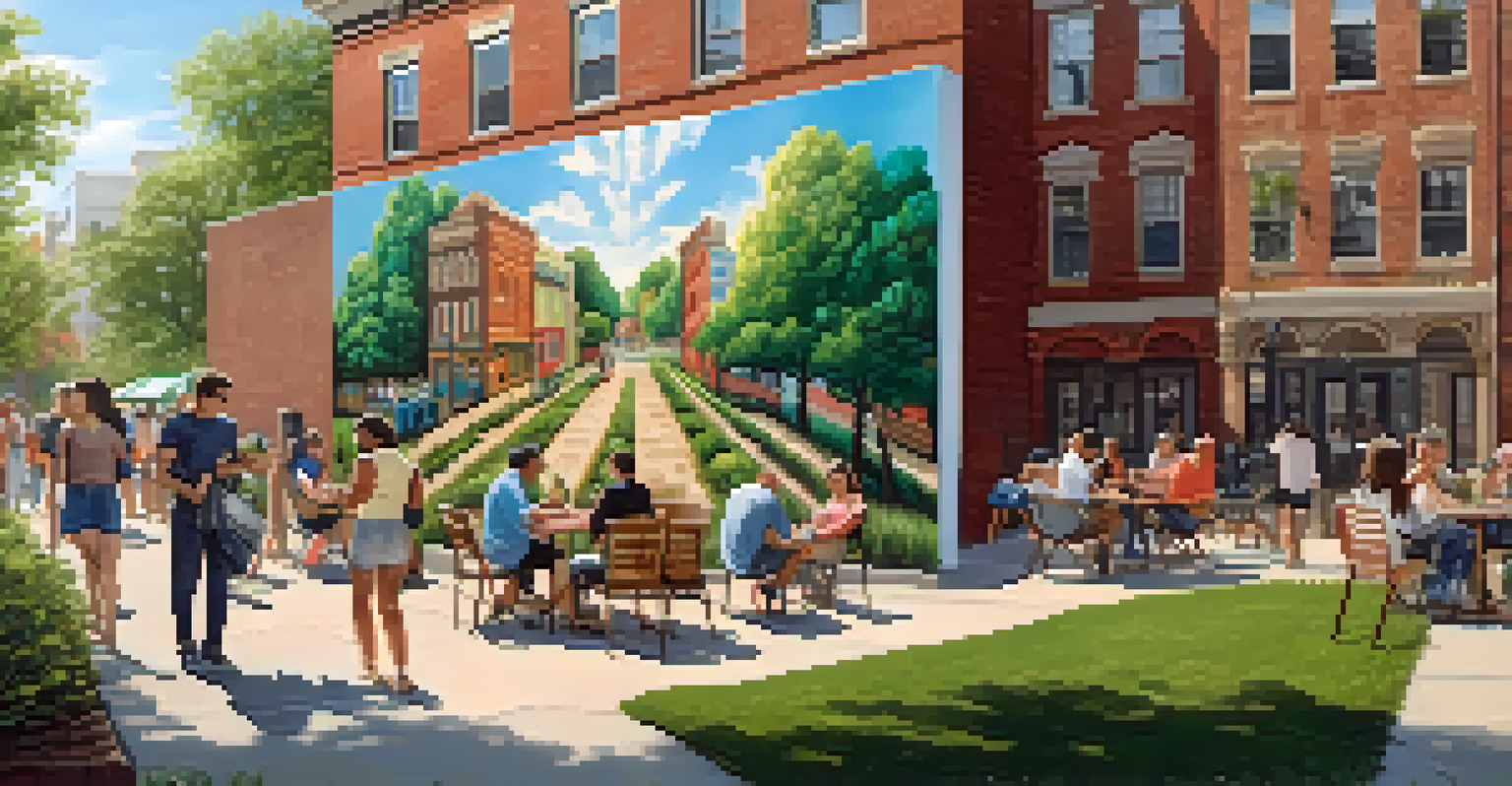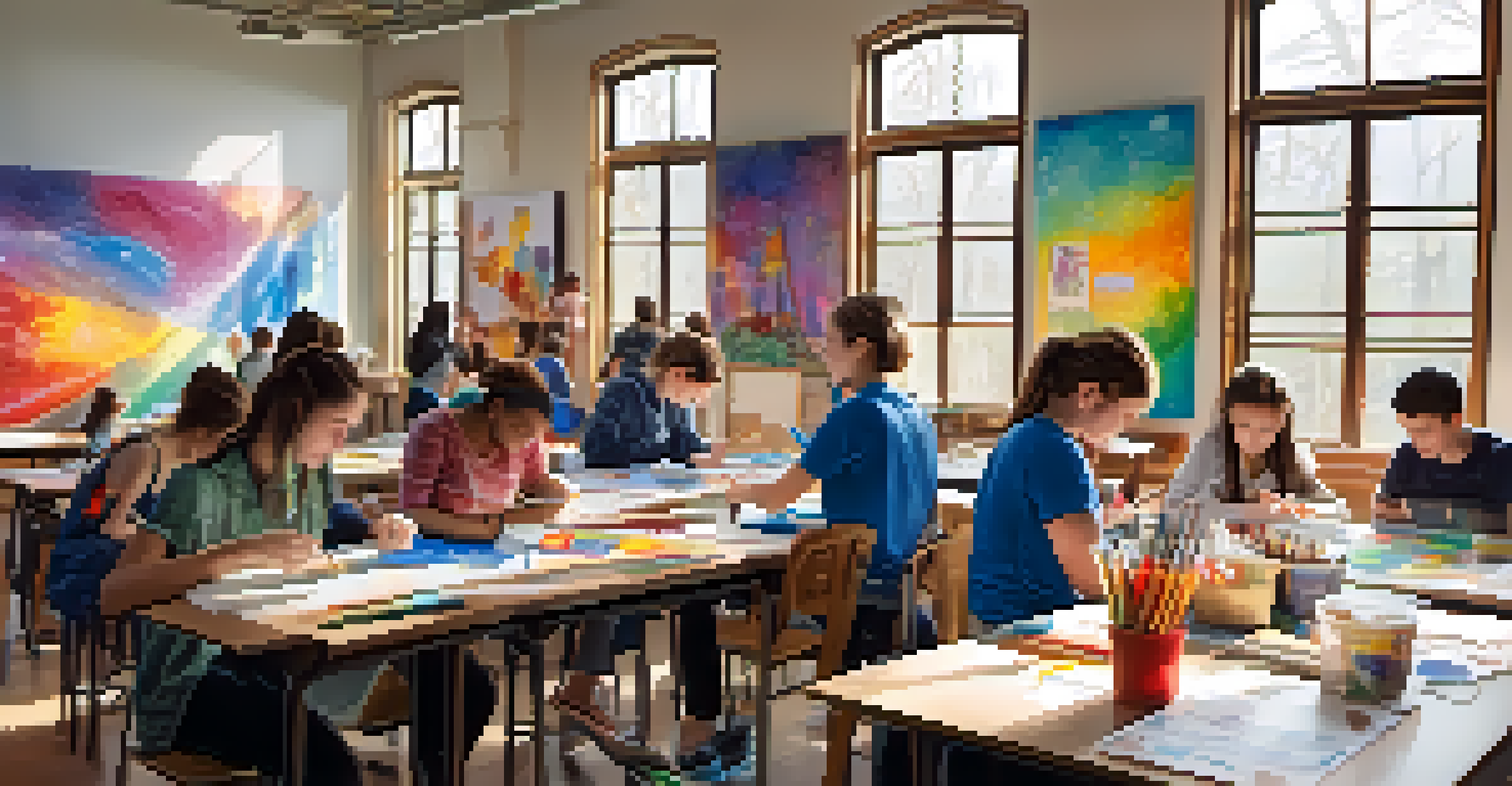Exploring the Arts Economy's Role in NYC's Growth and Resilience

Understanding the Arts Economy and Its Impact
The arts economy encompasses various sectors, including visual arts, performing arts, and cultural institutions. This vibrant sector is not just about creativity and expression; it's a significant economic driver in New York City. By generating billions in revenue and supporting thousands of jobs, the arts play a crucial role in the city’s financial ecosystem.
Art is not a thing; it is a way.
Art isn't confined to galleries and theaters; it spills over into neighborhoods, fostering community engagement and tourism. Events like street fairs and art installations attract visitors, creating a ripple effect that benefits local businesses. This interconnectedness highlights the importance of the arts as a pillar of New York's overall economy.
Furthermore, the arts economy is a powerful tool for social change. It encourages dialogue, promotes diversity, and nurtures a sense of belonging among residents. As cities evolve, the arts serve as a catalyst for revitalization, making communities more vibrant and inclusive.
The Role of Arts in Economic Growth
Economic growth in NYC is significantly bolstered by the arts sector, which contributes to job creation and local spending. For instance, the thriving theater district not only employs numerous artists and technicians but also supports hotels, restaurants, and transport services. This interconnected web of employment helps sustain the economy, particularly in challenging times.

Moreover, arts-related tourism is a significant economic contributor. Millions visit NYC each year to experience its cultural offerings, from Broadway shows to world-class museums. This influx of tourists invigorates the economy, creating a continuous cycle of growth and investment.
Arts Drive NYC's Economic Growth
The arts economy significantly contributes to job creation and local spending, fueling New York City's overall financial ecosystem.
Investment in the arts often translates to a more dynamic urban landscape. Public art installations, cultural festivals, and community workshops enhance the city’s appeal, attracting both residents and visitors. As a result, neighborhoods become more desirable places to live and work, further fueling economic prosperity.
Arts as a Catalyst for Urban Development
Arts initiatives often drive urban development, transforming neglected areas into cultural hubs. Neighborhoods like Williamsburg in Brooklyn have seen significant revitalization through creative enterprises, attracting new businesses and residents alike. This transformation illustrates how the arts can breathe new life into communities.
The arts are the most powerful means of communication we have. They can heal, inspire, and connect us as human beings.
Additionally, public art projects and performance spaces can revitalize underused areas, making them accessible and inviting. When communities embrace art, they foster an environment of creativity and innovation, which can lead to further investments and development. It's a beautiful cycle where art leads to growth and growth nurtures more art.
As urban spaces evolve, integrating art into city planning becomes essential. Designing parks, plazas, and public spaces with artistic elements not only enhances aesthetic appeal but also encourages community interaction. This approach creates a sense of ownership and pride, essential for the resilience of any urban area.
Resilience Through Cultural Identity
Cultural identity plays a vital role in the resilience of NYC, especially during challenging times. The arts reflect the diverse narratives of its residents, helping to strengthen community bonds. When people share their stories through art, they foster understanding and connection, which are crucial for navigating adversities.
During crises, such as the COVID-19 pandemic, artists and cultural institutions have been at the forefront of community support. From virtual performances to art therapy programs, the arts have provided solace and hope. This adaptability showcases the resilience of the arts economy and its pivotal role in recovery efforts.
Arts Foster Community Resilience
Cultural identity and artistic expression strengthen community bonds and promote resilience, especially during challenging times.
Furthermore, engaging with the arts can empower individuals and communities to advocate for their needs. By amplifying underrepresented voices, the arts help shape a more equitable society. This empowerment is essential for building resilience, as it encourages communities to come together and support one another.
The Economic Impact of Arts Education
Arts education is a cornerstone of the arts economy, providing opportunities for skill development and career pathways. Schools and community programs that focus on the arts equip students with creativity, critical thinking, and collaboration skills. These competencies are increasingly valued in today’s job market, enhancing employability.
Moreover, arts education fosters personal development and self-expression, which are essential for holistic growth. Engaging in creative activities can boost confidence and mental well-being, providing students with the tools to navigate life's challenges. This personal development contributes to a more resilient and adaptable workforce in the future.
Investment in arts education also pays off economically. Graduates who pursue careers in the arts contribute to the economy, whether through direct employment or by fueling creative industries. This cycle of education and economic contribution underscores the importance of nurturing the next generation of artists.
Challenges Facing the Arts Economy
Despite its contributions, the arts economy faces several challenges, including funding shortages and competition for resources. Many cultural institutions rely on grants and donations, which can fluctuate based on economic conditions. This uncertainty can hinder their ability to plan and execute long-term projects that benefit the community.
Additionally, the pandemic highlighted vulnerabilities within the arts sector, with many organizations struggling to adapt to new realities. The shift to digital platforms was a lifeline for some, but it also revealed disparities in access to technology and resources. Addressing these gaps is crucial for ensuring a more equitable arts economy.
Investing in Arts Education Matters
Arts education equips students with essential skills and fosters personal development, contributing to a more adaptable workforce.
Moreover, as NYC continues to grow, there is a risk of gentrification pushing out long-standing cultural institutions. This can lead to a loss of the very diversity that makes the city unique. Advocating for policies that protect and support the arts is essential for maintaining the cultural fabric of NYC.
Looking Ahead: The Future of the Arts Economy
The future of the arts economy in NYC is promising, with opportunities for innovation and collaboration. Community-driven initiatives and partnerships between artists, businesses, and local governments can create sustainable models for growth. By harnessing the power of technology, the arts can reach wider audiences and engage with diverse communities.
Moreover, as cities worldwide recognize the importance of culture in urban planning, NYC can lead the way in integrating the arts into public policy. This could involve dedicated funding for arts programs and support for local artists. Such initiatives not only benefit the economy but also enrich the city’s cultural landscape.

Ultimately, the resilience of the arts economy hinges on community support and engagement. By prioritizing the arts and recognizing their value, New Yorkers can ensure that this vibrant sector continues to thrive. The arts are not just a luxury; they are essential for a thriving, resilient city.